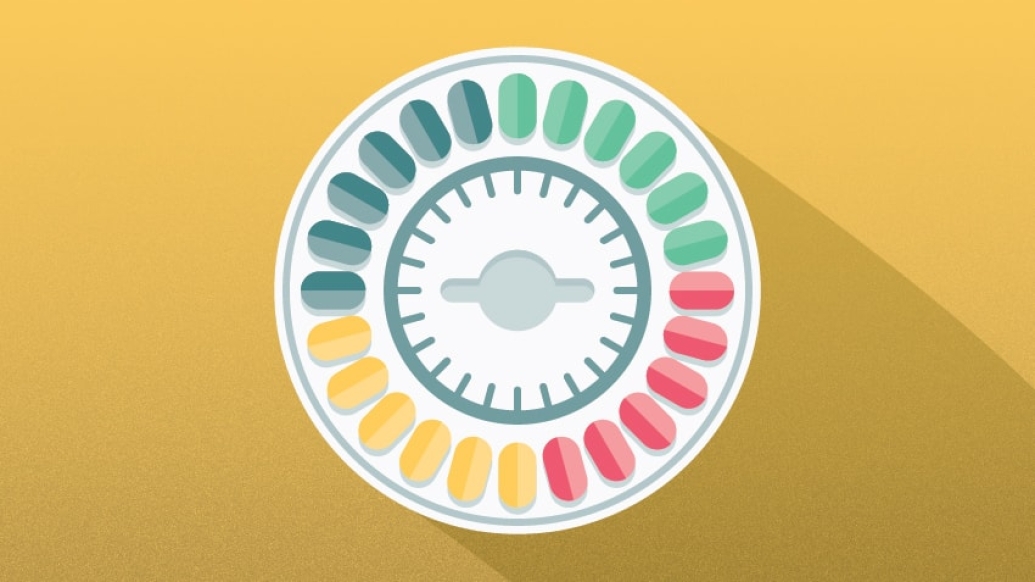Learn about the various types of contraception, the effectiveness of each one and which options could pose a risk for some patients seeking to prevent pregnancy.
1:00 PM
Author |

The variety of contraception options can be overwhelming. How do you know which birth control is best?
MORE FROM MICHIGAN: Sign up for our weekly newsletter
Women's health experts suggest asking a different question: Which contraception is best for you? Birth control should fit your lifestyle, your parenthood future and your values, says Elizabeth Shih, M.D., a Michigan Medicine family medicine physician.
Your health history plays an important role as well, especially if you're a smoker or you have chronic health conditions (such as high blood pressure or migraine headaches) that make it less safe to use a birth control containing synthetic estrogen.
"It depends on you, your life and what you are looking for in contraception," Shih says.
It's an important conversation to have with your health care provider. Nearly all women use contraception at some point in their lives, according to the National Center for Health Statistics. About 62 percent of women ages 15 to 44 in the United States (38 million) use contraception, federal data shows.
The Affordable Care Act ensures that all plans in the health insurance marketplace must cover one type of birth control per person from each of the FDA-approved categories (barrier methods, long-acting reversible contraceptives, contraceptive injection, short-acting hormonal methods and permanent sterilization) at no out-of-pocket cost, although some plans have exemptions.
Shih breaks down the options and explains the effectiveness of each.
Different types of birth control
Barrier methods: These prevent sperm from reaching an egg and include condoms for men and women, diaphragms, contraceptive sponges and cervical caps. Overall, male condoms are the most effective barrier method to prevent pregnancy and sexually transmitted infections (STIs).
Spermicide, a chemical method that blocks sperm from entering the cervix and slows sperm's ability to swim, is inserted in the vagina before intercourse and is available as a cream, gel, foam or suppository. It's a mandatory component with diaphragms and cervical caps — and often is used in tandem with condoms and/or natural family planning (the rhythm method), in which a woman monitors her ovulation and avoids intercourse during that period.
Long-acting reversible contraceptives: There are two types of intrauterine devices (or IUDs). Hormonal IUDs release a progestin hormone (levonorgestrel) into the uterus, which causes thickening of the cervical mucus to inhibit sperm from reaching or fertilizing the egg. The devices may also prevent the ovaries from releasing eggs.
SEE ALSO: When Women Delay Childbirth to Their 30s (or Later), How Does It Affect Health?
The hormonal IUDs currently available in the U.S. are Mirena, Skyla, Liletta and Kyleena; they're FDA-approved to last for 3 to 5 years. Each has the added benefit of reducing heavy menstrual bleeding during use.
A hormone-free copper IUD (ParaGard) prevents sperm from reaching and fertilizing the egg. Because this device also will prevent implantation of a fertilized egg, it also can be used as emergency contraception. It can remain in the uterus for 10 years.
An implantable rod (Nexplanon) is the current option in the U.S. for a contraceptive implant. The size of a matchstick, it's effective for 3 years.
Contraceptive injection: The Depo-Provera shot is a synthetic progestin that is injected into the arm or buttocks by a health care provider every three months; getting the shot outside an 11- to 13-week window will decrease its effectiveness.
Short-acting hormonal methods: Combined hormonal contraceptives (CHCs) contain synthetic estrogen and progestin to prevent pregnancy by inhibiting ovulation (stopping an egg's release each month) and thickening cervical mucus.
The options: oral contraceptives ("the pill"), the contraceptive patch (Ortho Evra) and the vaginal ring (NuvaRing). There's also a progestin-only pill (Micronor) that is often referred to as the "minipill."
Permanent sterilization: For those who are certain they do not want any future pregnancies, permanent contraception exists. For males, a vasectomy involves a surgery that cuts and seals the tubes that carry sperm into the semen.
Women may have tubal ligation surgery, or use the implantable Essure System, both of which block the fallopian tubes, preventing sperm from reaching the egg.
Which birth control methods work best?
Other than permanent sterilization, the most reliable methods are long-active reversible contraceptives, which include IUDs and the implantable rod.
SEE ALSO: A Female Urologist Explains Women's Most Common Urological Concerns — and How to Treat Them
Both of those devices are 99 percent effective, which means fewer than 1 in 100 women who use one will get pregnant. Users also have the added benefit of being able to get pregnant soon after stopping them, Shih says.
"They are as effective as permanent forms of contraception such as tubal ligation," Shih says.
Implantable rods are inserted under the skin of the upper arm and offer protection for up to 3 years. Here, patients don't have to remember to take a pill or run to a pharmacy for a refill. Some women, however, may experience irregular menstrual bleeding.
An IUD is inserted by a health care provider through the cervix into the uterus during an in-office procedure; surgery is not needed. The T-shaped device has a short string that hangs into the vagina that will be used to remove it.
"One of the nice things about hormonal IUDs that release a small amount of progestin locally is that women have significantly lighter periods or sometimes no periods with them," Shih says.
The hormone-free copper IUD, ParaGard, often causes heavier periods with more cramping, although some patients say this side effect declines over time. It is considered the most effective emergency contraception if implanted within 120 hours of unprotected sex — with a 99.9 percent effective rate.
Birth control pills and the birth control patch are 91 percent effective with typical use, meaning 9 in 100 women will get pregnant using them; the birth control shot is 94 percent effective.
The patch, which is placed on the belly, buttocks, back or upper arm, must be changed every 3 weeks. The pill needs to be taken at roughly the same time each day, so forgetting to take it may cause a pregnancy.
"That's why it's important to consider your lifestyle when choosing contraception," Shih says. "If you always forget to take medicine, maybe the pill isn't the choice for you."
Considering safety and lifestyle shifts
Health considerations may also limit contraception choices. And conditions such as obesity may decrease the effectiveness of certain options.
"You have to look at what's medically safest for women to use," Shih says.
For many, it isn't safe to use methods that contain synthetic estrogens. Women with severe migraines that cause neurologic symptoms (vision changes being most common) should not use combined hormonal contraceptives that contain estrogen.
Other factors that make it riskier for women to use CHCs (such as birth control pills and the patch) include smoking, being older than 35 and having high blood pressure. Patients with a history of blood clots or breast cancer should never use contraceptives that contain estrogen. Using those methods puts patients at higher risk for a stroke or a cardiovascular event, so progestin-only hormone pills or another method is encouraged.
Another health risk to consider: Only synthetic condoms prevent sexually transmitted infections (male condoms are more effective than female condoms in reducing the risk of transmission).
Nor are they reliable contraception, Shih says. Male condoms are only 85 percent effective, while female condoms are 79 percent effective. Which is why Shih encourages "dual protection" by using male condoms and a secondary birth control option for patients at risk for STIs.
The abundance of contraception choices means women may change methods throughout their reproductive life, depending on the needs of each season of life, Shih says. A primary care provider or gynecologist can help navigate the options.
"If you aren't happy with your current (birth control) method, there are many different options" Shih says.
A Michigan Medicine primary care provider or gynecologist can help you choose a birth control option best suited for you.

Explore a variety of health care news & stories by visiting the Health Lab home page for more articles.

Department of Communication at Michigan Medicine
Want top health & research news weekly? Sign up for Health Lab’s newsletters today!





